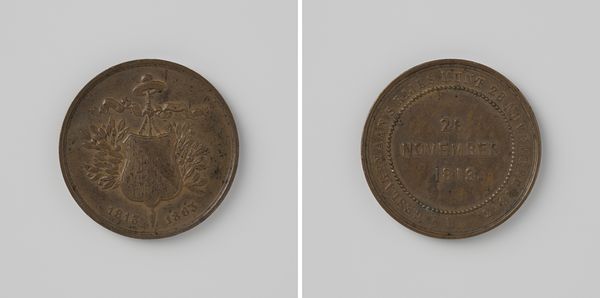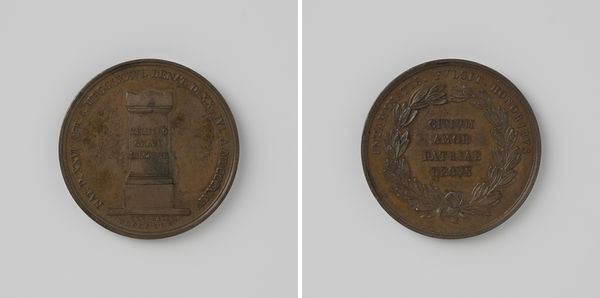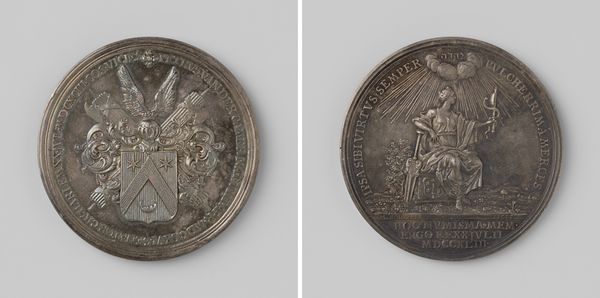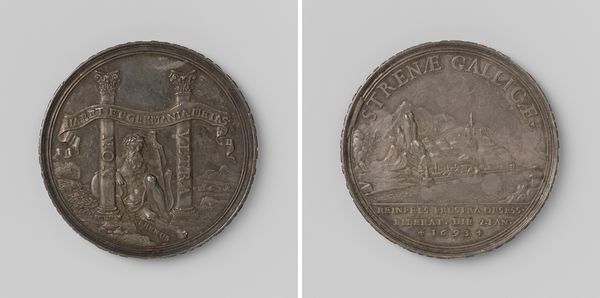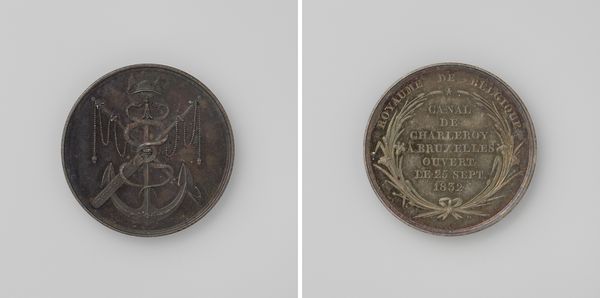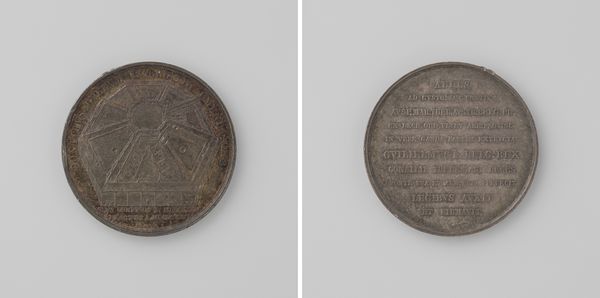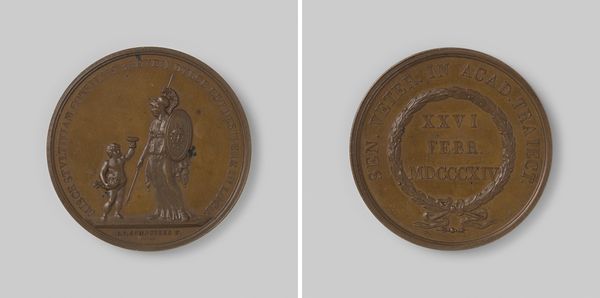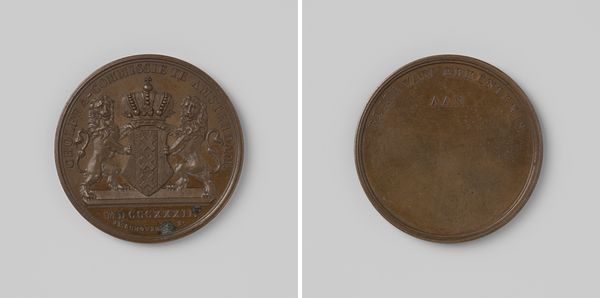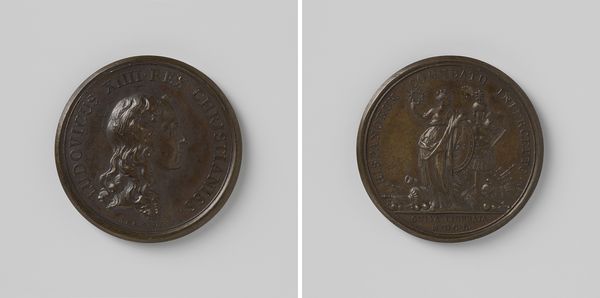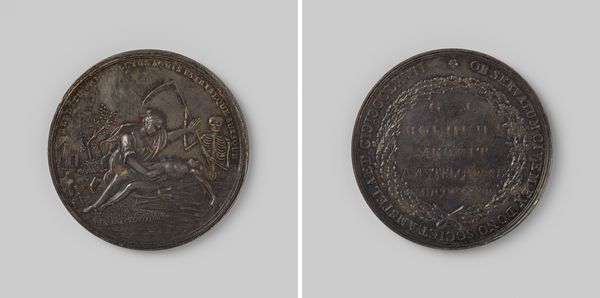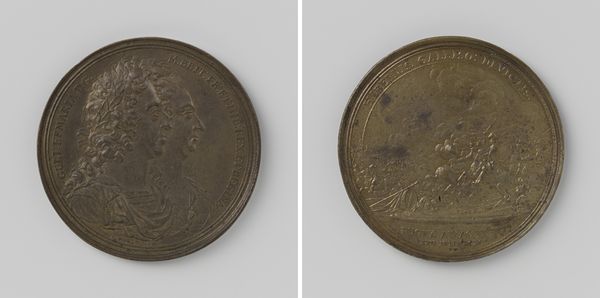
Uitreiking van vaandels aan dorpen en steden, ter herdenking van de september-dagen 1832
0:00
0:00
#
natural stone pattern
#
3d sculpting
#
3d model
#
3d printed part
#
sculpture
#
sculptural image
#
unrealistic statue
#
3d shape
#
stoneware
#
statue
Dimensions: diameter 4.1 cm, weight 35.79 gr
Copyright: Rijks Museum: Open Domain
Editor: This is "Uitreiking van vaandels aan dorpen en steden, ter herdenking van de september-dagen," made in 1832 by Adrien Hippolyte Veyrat. It's quite small, probably a medal. It feels…serious. A bit old-fashioned, of course. It shows a lion, but the imagery is new to me. What strikes you about this piece? Curator: Well, medals like this served a crucial public role in the 19th century. They weren't just decorative; they were political statements, distributed to specific communities to reinforce national identity. In this case, the "September Days" refers to the Belgian Revolution. This medal was produced just a couple of years after Belgium gained independence from the Netherlands. Editor: So the lion is a symbol of Belgian courage and strength? Curator: Precisely. But consider who designed this medal and for whom. Veyrat likely created this for the newly formed Belgian government, aimed at consolidating its authority. The image isn’t just about bravery, but about legitimizing the new political order. What's the text on the reverse of the medal? Editor: "La Patrie Reconnaissante" – the grateful fatherland or motherland. And it mentions something about rewarding villages and cities. Curator: Exactly! This medal literally embodies the state’s “gratitude.” It’s a tangible reward for loyalty and participation in the revolution. Note how this piece tries to manufacture national feeling using art to help to weave a unified identity through these cities. This form of statemaking used celebratory propaganda and rewarded behavior for socio-political control. Editor: So, the artwork is less about representing the revolution itself, and more about constructing the idea of a unified, grateful Belgium after the fact? Curator: Absolutely. It's a fascinating example of how art can be a tool for nation-building, using imagery and distribution to shape collective memory. Editor: I hadn't considered the role of art that explicitly. That gives me a whole new appreciation for medals and their place in the world! Curator: It's important to consider how art objects participate in larger systems of power and belief. Examining public art pieces such as this piece brings those connections to light.
Comments
No comments
Be the first to comment and join the conversation on the ultimate creative platform.
